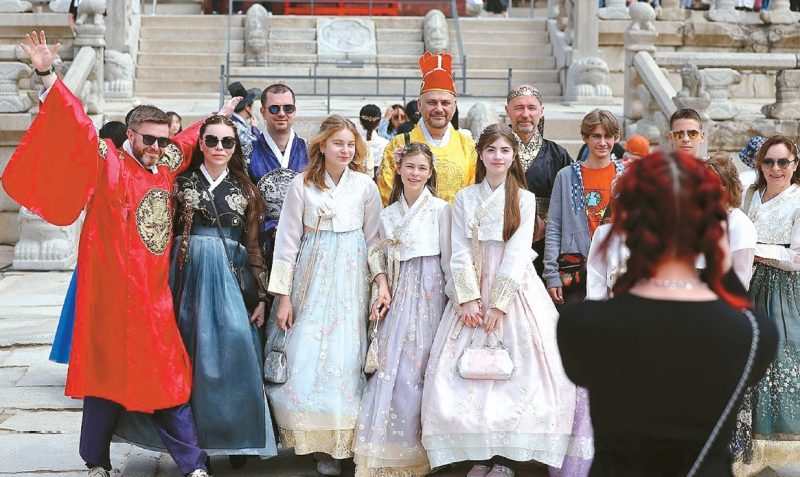The Korean-American travel industry is actively working to attract second-generation and non-Korean travelers interested in Korean tourism, spurred by the growing global popularity of Korean culture.
While most travel agencies currently offer bilingual guides for small-group family tours of English-speaking Koreans visiting Korea, a few have launched specialized tours conducted entirely in English and are beginning to see success.
PRT Tour, for example, introduced a tour to Korea for members of the American Chamber of Commerce in Orange County in March. By mid-June, they had launched an English-guided tour package. The five tour options, including a tour of Seoul, a cultural history tour, and a UNESCO World Heritage tour, are all available in English.

Taejun Park, director of PRT Tour, explained, “With the increasing interest in Korean culture due to the popularity of K-pop, dramas, and food, we launched English-guided tours with the goal of global marketing by expanding our target audience from Koreans to non-Korean travelers. The Seoul tour, which covers major attractions and food in just five days, has already sold out twice.”
Wholesale travel agency Daone USA is also launching seven K-Noble Tours led by professional English-speaking guides, with weekly departures starting next month.
“The Korean Wave has led to an 80 percent increase in inquiries from second-generation and other ethnic groups interested in visiting Korea,” said Kiyeon Yoon, CEO of Daone USA. “Our English-language guided tours are different from existing tours to Korea in terms of operation and content. They offer lunch with local specialties, no tipping, no shopping, and no other options. The tours are focused on Korean food, culture, and UNESCO sites.”
“We are promoting these tours through Instagram, the Korea Tourism Organization’s Travel Mart, local tourism fairs, and mainstream tourism companies to meet the needs of both Korean and non-Korean travelers. We’ve already received numerous inquiries and reservations,” Yoon added.
Other companies are also expanding their English-language tours to attract new customers.
“We’ve seen a 50% increase in English-speaking children visiting Korea with their parents during school vacations compared to before the pandemic,” said Youngim Shin, vice president of Samho Tour. “In some cases, both parents and their children only speak English, so we’ve organized over 20 groups for exclusive tours. We plan to expand our English-language tours to include other groups of customers in the future, as we often receive inquiries about Korean tours due to the influence of Korean culture, such as the recent KCON. We’re also considering promoting through mainstream media outlets and Instagram to attract younger tourists.”
Steve Cho, director of Aju Tour, mentioned, “There is a growing demand from the non-Korean customer base to visit Korea, not just second-generation Korean Americans. We are offering English-language guided tours in small groups, allowing travelers to customize their accommodations, activities, and more.”
Grace Lee, manager at Four Seasons Tours, noted, “We’ve seen a 25% increase in English-language tours to Korea since the pandemic. Parents are seeking small group English-language tours for families rather than packaged tours to help their English-speaking children understand Korean heritage. We are adding one to two days to our itineraries to cater to the interests of second-generation Korean Americans, such as visiting popular places around Seoul. We are currently enhancing the English version of our website and developing various new small group tours to attract more English-speaking travelers.”
The number of U.S. visitors to Korea has continued to grow steadily this year, with June showing a 25% year-on-year increase to 151,721, up from a record high of 1,084,115 last year.
BY NAKI PARK, HOONSIK WOO [park.naki@koreadaily.com]




